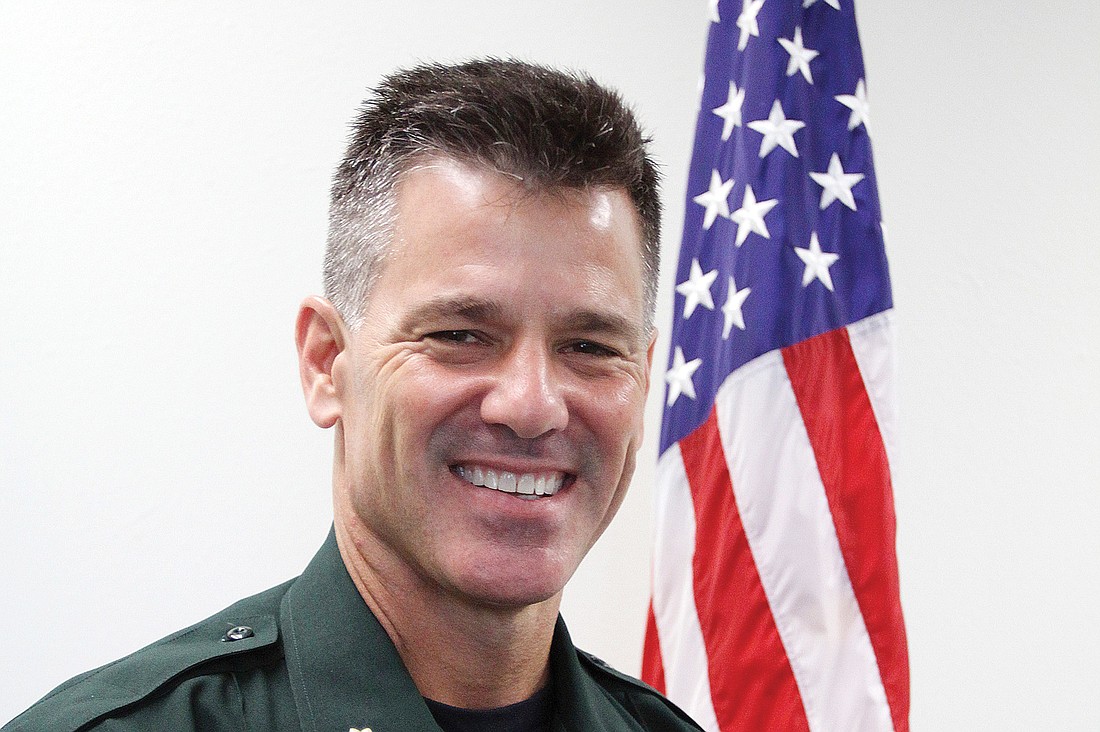- April 15, 2024
-
-
Loading

Loading

When the White House announced plans for President George W. Bush to visit Sarasota in early September 2001, Terry Lewis and Kevin Kenney, of the Sarasota County Sheriff’s Office, knew they would be dealing with the usual planning and logistics that revolve around such an occasion.
At least for Lewis, then a colonel, the extra work would be tempered by the opportunity to catch up with a good friend who had become a member of the Secret Service’s SWAT-type team.
“We had kind of watched this guy grow up” in the Sheriff’s Office, Lewis said, before the friend, Rob Buster, joined the Secret Service.
“I saw (Buster) briefly at the airport (on Sept. 10, 2001) and said, ‘Why don’t we get together for a beer tomorrow evening?’ The last time I saw him (he) was in one of those big black Suburbans following the president,” Lewis said. “We never did get that beer.”
On the morning of Sept. 11, Lewis was among the law enforcement personnel who accompanied the president to Emma E. Booker Elementary School. Kenney, now a major, was the Sheriff’s Office helicopter pilot waiting at the Venice Municipal Airport.
“I was due to pick up a Secret Service agent to conduct the motorcade cover from the hotel to Emma Booker,” Kenney said. “When I got to the airport … it was unseasonably foggy, so I had to cancel the motorcade cover.”
Kenney took the opportunity to watch the news at the hangar as he waited for the fog to lift. As soon as he learned about the second airliner flying into the World Trade Center towers, he contacted the Sheriff’s Office personnel with the president.
At that point, even though the flying conditions were still not ideal, a member of the Secret Service detail asked Kenney if he could launch the helicopter. Kenney was told not to worry about picking up an agent; the Secret Service just wanted him to get to Sarasota-Bradenton Airport as quickly as possible. “So that was what I did,” Kenney said.
Fortunately, the fog had started to lift, and the further north he flew, the clearer the sky grew.
As he approached the airport, Kenney radioed, as usual, for clearance to enter the airspace. The air traffic controllers refused permission, he said, because the FAA had been rushing to ground all air traffic.
Kenney asked if by any chance a Secret Service agent was in the tower. When he received an affirmative, he communicated to the agent a code word he had used the previous day with the presidential detail. The agent then told the tower to clear him to enter the airspace.
By the time he was hovering over Air Force One, Kenney said, the president’s motorcade was coming around the corner of the main terminal. The Secret Service then directed him to fly the airport perimeter and to be on the lookout for any suspicious vehicles or groups of people. He continued his surveillance for the 10 or 15 minutes it took the Secret Service to get Bush and the other members of his team board Air Force One.
“They really loaded him up quickly and got him out of there,” Kenney said.
Then, Kenney said, the Secret Service told him to fly to the opposite end of the runway, so the Boeing 747 could take off.
After Air Force One had departed, Kenney started noticing numerous vehicles parked along the streets all around the airport.
“It was amazing how many people showed up in that short time frame,” he said. “They just wanted to see Air Force One take off, and that was quite a sight.
“I’ve never seen a plane that large take off that steeply. It was impressive.”
In spite of the gravity of the morning’s events, Kenney said he didn’t recall stress. Rather, he said, “It was chaotic. It was very chaotic on the (Sheriff’s Office) radio.”
Lewis reflected on being at Booker Elementary as part of the security detail, which included Sarasota Police Department, Florida Highway Patrol and Manatee Sheriff’s Office personnel.
“Just to be in the same room with (Bush) was pretty cool,” he said. “Being part of history was fascinating.”
After the president had flown away, Lewis said, “There was very much a sigh of relief. Then it was just the shock of what had occurred.”
The Sheriff’s Office did have one more responsibility at that point, Lewis said. Personnel also had to protect all the security and communications equipment the Secret Service was forced to leave behind on Longboat Key, in the rush to move the president to a secure location.